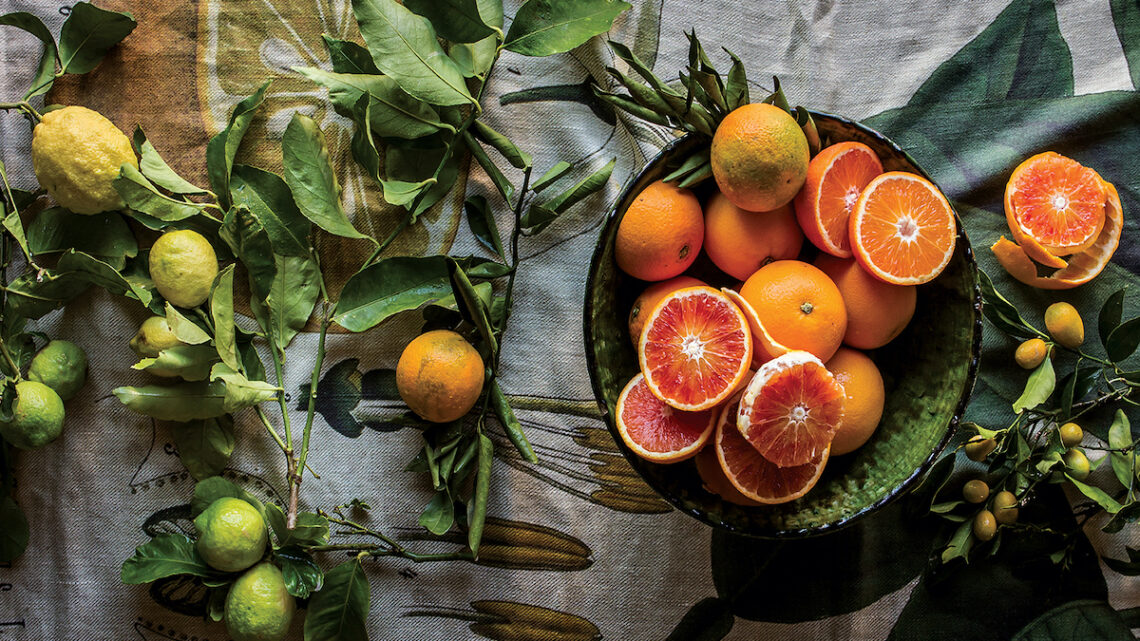Winter the season for oranges
Citrus Varieties
Citrus is one of the world’s most loved fruit tree.
The Navel orange gets its name from the hole at the base of the fruit that encloses a miniature, underdeveloped secondary fruit (resembling a human navel). They have a rich, juicy flavour and rough, bright orange skins that are easy to peel.
Valencia
The Valencia is named after the Spanish city of Valencia, although its true origin remains unknown. It has thinner skin than the Navel, is generally sweet and commonly cultivated for the production of juice. Tarocco Blood Orange
The Italian Tarocco blood orange has striking, red flesh that develops during the cold winter nights. It is tender and juicy, with a flavour reminiscent of strawberry.
Seville
The common bitter Seville orange is widely grown in Spain. The bitter taste makes it an excellent choice for marmalade or other spreads. Petitgrain essential oil is distilled from the leaves, while oil of neroli is extracted from the flowers. The dried flowers are used to make tea in China.
Blood Orange Marmalade
This is a recipe we have adapted from Delia Smith.
Makes about 6 x 350 ml jars
Ingredients
900 g blood oranges
1 lemon
1.8 kg granulated sugar
Method
Begin by measuring 2.25 litres water into a preserving pan, then cut the lemon and oranges in half and squeeze the juice out of them. Add the juice to the water and place the pips and any bits of pith that cling to the squeezer on a square of muslin.
Now cut the orange peel into quarters with a sharp knife, and then cut each quarter into thinnish shreds. As you cut, add the shreds to the water and any pips or spare pith you come across should go on to the muslin. The pith contains a lot of pectin so don't discard any and don't worry about any pith and skin that clings to the shreds – it all gets dissolved in the boiling.
Now tie the pips and pith up loosely in the muslin to form a little bag, and tie this on to the handle of the pan so that the bag is suspended in the water. Then bring the liquid up to simmering point and simmer gently, uncovered, for 2 hours or until the peel is completely soft (test a piece carefully by pressing it between your finger and thumb).
Meanwhile, chill a couple of saucers in the freezer.
Next, remove the bag of pips and leave it to cool on a saucer. Then pour the sugar into the pan and stir it now and then over a low heat, until all the crystals have dissolved (check this carefully, it's important). Now increase the heat to very high and squeeze the bag of pips over the pan to extract all of the sticky, jelly-like substance that contains the pectin. As you squeeze you'll see it ooze out. You can do this by placing the bag between two saucers or using your hands. Then stir or whisk it into the rest.
As soon as the mixture reaches a really fast boil, start timing. Then after 15 minutes spoon a little of the marmalade on to one of the cold saucers from the freezer and let it cool back in the fridge. You can tell – when it has cooled – if you have a 'set' by pushing the mixture with your little finger: if it has a really crinkly skin, it is set. If not, continue to boil the marmalade and give it the same test at about 10-minute intervals until it does set.
After that remove the pan from the heat (if there's a lot of scum, most of it can be dispersed by stirring in half a teaspoon of butter, and the rest can be spooned off). Leave the marmalade to settle for 20 minutes.
In the meantime, the jars should be washed, dried and heated in a moderate oven for 5 minutes. Pour the marmalade, with the aid of a funnel or a ladle, into the jars and seal while still hot.
Label when cold and store in a dry, cool, dark place.
We, the Amsterdam Flavours chefs, hope you enjoy this recipe as much as we do. If you have any questions on how to prepare it or just want to send us your feedback, you can reach us here Contact Amsterdam Flavours


